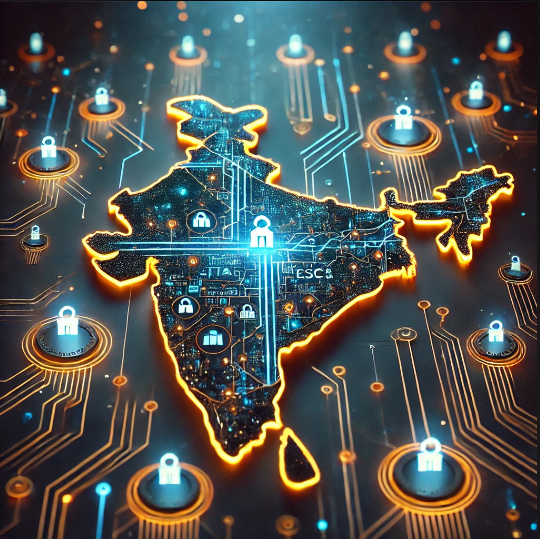Introduction
The e-District Project is an ambitious initiative under the National e-Governance Plan (NeGP) aimed at transforming the governance framework in Uttar Pradesh. Implemented by the Government of Uttar Pradesh, this project seeks to deliver public services to citizens efficiently, transparently, and conveniently. The e-District project enables the digitalization of services, reducing bureaucratic red tape and the need for physical interactions at government offices.
Objectives of the e-District Project
- Simplification of Government Services: To streamline and digitize essential services across various departments.
- Accessibility: To ensure that government services are available to all, including rural and remote areas.
- Transparency: To reduce corruption by minimizing direct interactions between citizens and government officials.
- Time Efficiency: To deliver services in a time-bound manner.
- Citizen Empowerment: To provide citizens with real-time information and access to services.
Key Features of the e-District Project
- Integrated Service Delivery:
- Offers a wide range of government services under a single digital platform.
- Services include issuance of certificates (income, caste, domicile), registration of grievances, pensions, and licenses.
- User-Friendly Interface:
- A web-based portal (edistrict.up.gov.in) and mobile applications for easy access.
- Available in Hindi and English to cater to diverse linguistic needs.
- Common Service Centers (CSCs):
- Over 75,000 CSCs established across the state.
- Act as a bridge between citizens and the government, especially in rural areas.
- Real-Time Tracking:
- Citizens can track the status of their applications and service requests.
- SMS and email alerts are integrated for updates.
- Grievance Redressal Mechanism:
- A dedicated system to address citizen complaints promptly.
- A dedicated system to address citizen complaints promptly.
- Digital Certificates:
- Certificates issued under the e-District project are digitally signed and verifiable.
Implementation in Uttar Pradesh
The Government of Uttar Pradesh has implemented the e-District Project across all its 75 districts, making it one of the most extensive deployments of this initiative in India. Key milestones in its implementation include:
- Initial Rollout: The project was piloted in select districts before statewide implementation.
- Training and Capacity Building: Training programs were organized for government staff and CSC operators.
- Technological Infrastructure: Robust IT infrastructure, including servers, secure networks, and cloud storage, was established to support the project.
- Collaboration with Private Entities: Partnerships with private companies for software development and maintenance enhanced efficiency.
Success Stories and Achievements
- Enhanced Service Delivery:
- Millions of citizens have availed services like caste certificates, income certificates, and pension approvals without visiting government offices.
- The average turnaround time for service delivery has been reduced significantly.
- Rural Inclusion:
- CSCs have empowered rural populations by providing access to digital services in their localities.
- Women and marginalized communities, who traditionally face barriers in accessing government services, have benefited immensely.
- Boost to Digital Literacy:
- The project has indirectly promoted digital literacy as citizens are encouraged to use online platforms.
- The project has indirectly promoted digital literacy as citizens are encouraged to use online platforms.
- Revenue Generation:
- The project has streamlined processes like property registration and licensing, increasing state revenue through transparency.
Challenges Faced
- Digital Divide:
- Despite efforts, internet connectivity remains poor in some rural areas, limiting access to services.
- Despite efforts, internet connectivity remains poor in some rural areas, limiting access to services.
- Capacity Issues:
- Limited digital literacy among citizens and some government officials has slowed adoption.
- CSC operators often require additional training to handle complex queries.
- Technical Glitches:
- Occasional server downtime and slow processing have frustrated users.
- Cybersecurity risks pose challenges in maintaining data integrity.
- Resistance to Change:
- Bureaucratic resistance and a lack of coordination between departments have hindered seamless implementation.
Is it a Good Initiative for E-Governance?
The e-District Project is undoubtedly a landmark initiative in the direction of e-Governance in Uttar Pradesh. Here’s why:
- Improved Governance:
- It has streamlined service delivery, making the administration more citizen-centric and accountable.
- It has streamlined service delivery, making the administration more citizen-centric and accountable.
- Reduction in Corruption:
- By minimizing physical interactions and enabling direct online transactions, the project has curtailed opportunities for corruption.
- By minimizing physical interactions and enabling direct online transactions, the project has curtailed opportunities for corruption.
- Scalability:
- The project’s robust infrastructure and service catalog make it scalable for future enhancements.
- The project’s robust infrastructure and service catalog make it scalable for future enhancements.
- Inclusivity:
- The project has brought government services to the doorsteps of rural and marginalized communities.
However, to fully realize its potential, the following measures are crucial:
Recommendations
- Strengthening Digital Infrastructure:
- Expand high-speed internet connectivity to remote areas through public-private partnerships.
- Expand high-speed internet connectivity to remote areas through public-private partnerships.
- Capacity Building:
- Conduct extensive training programs for citizens, government staff, and CSC operators.
- Promote digital literacy initiatives at the grassroots level.
- Enhancing User Experience:
- Improve the e-District portal and mobile application for faster and smoother navigation.
- Improve the e-District portal and mobile application for faster and smoother navigation.
- Cybersecurity:
- Invest in advanced cybersecurity measures to protect sensitive data and maintain user trust.
- Invest in advanced cybersecurity measures to protect sensitive data and maintain user trust.
- Periodic Monitoring and Feedback:
- Regular audits and citizen feedback mechanisms can identify gaps and areas for improvement.
Conclusion
The e-District Project of Uttar Pradesh represents a paradigm shift in governance, leveraging technology to bring government services closer to citizens. While challenges remain, the project has already shown significant success in enhancing transparency, efficiency, and inclusivity. With sustained efforts to address existing gaps, the e-District Project can serve as a model for e-Governance in India and beyond, transforming Uttar Pradesh into a digitally empowered society.




